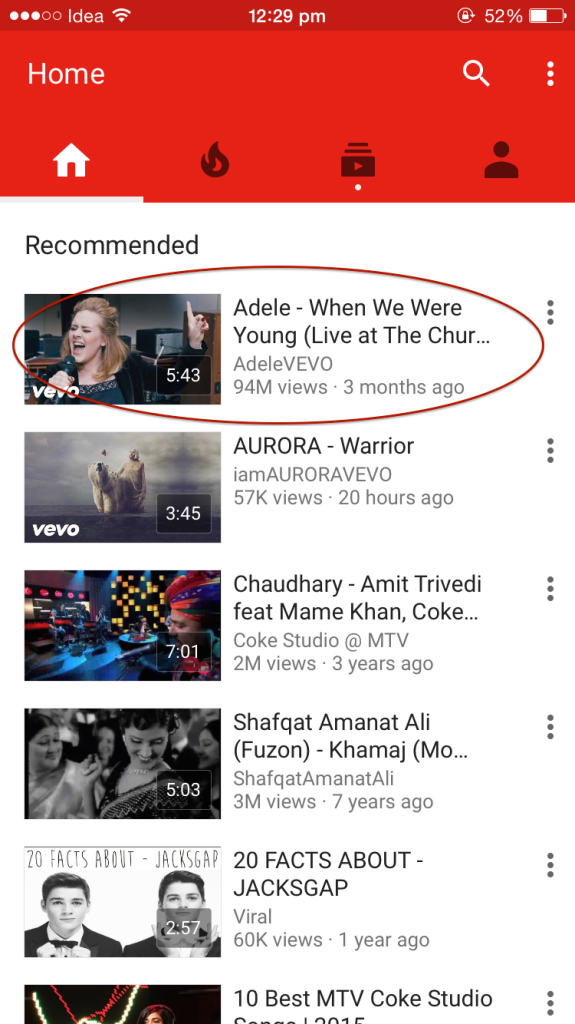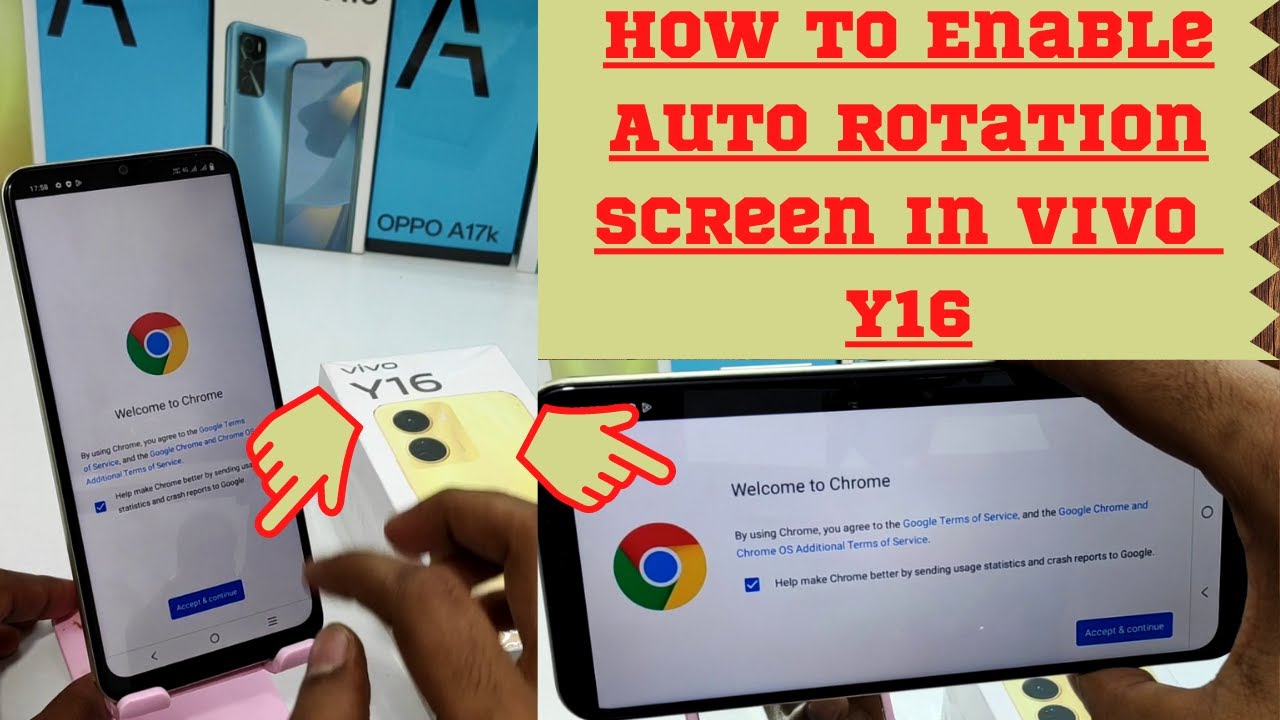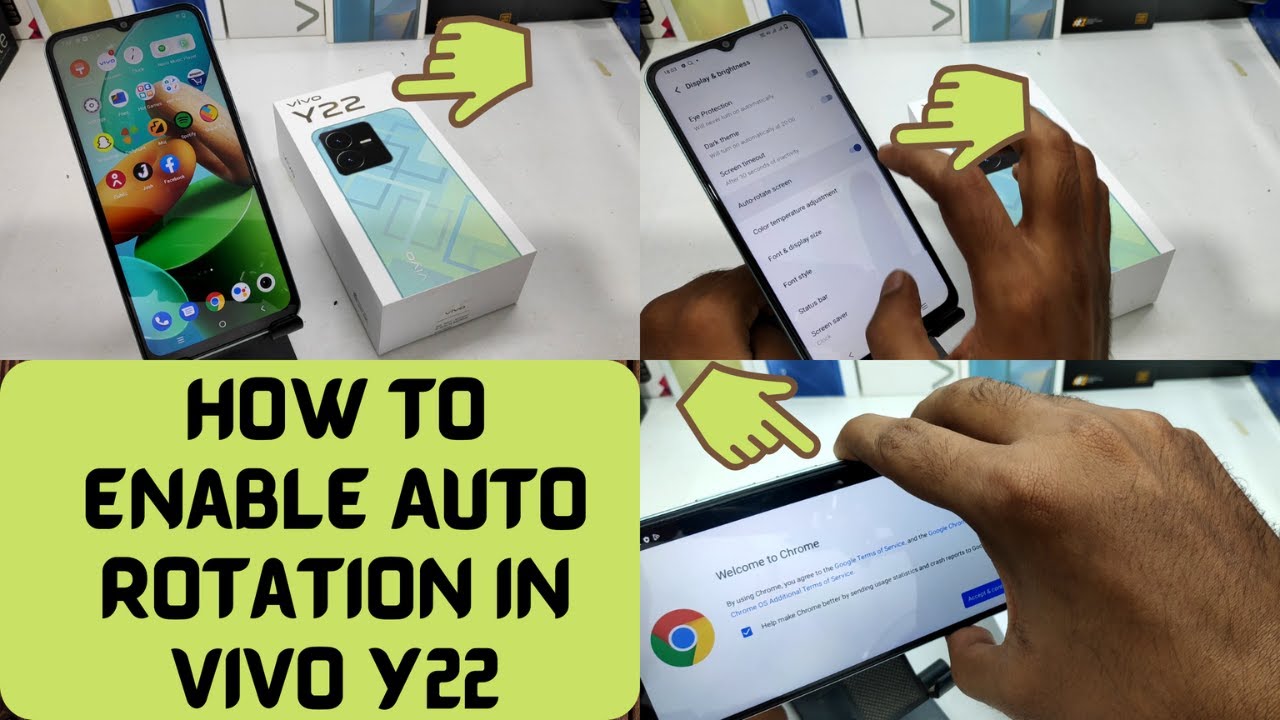Are you tired of manually adjusting your phone while watching YouTube videos? You're not alone! The YouTube Auto Rotate feature can make your viewing experience seamless by automatically adjusting the video orientation based on how you hold your device. In this post, we’ll explore how auto rotate works on mobile devices and how it enhances your enjoyment of video content. Let’s dive in!
Importance of Auto Rotation for YouTube Viewing

Imagine this: you’re deeply engrossed in a thrilling video, and suddenly you need to switch your phone from portrait to landscape mode. Instead of flipping your device and waiting for the screen to adjust, wouldn’t it be amazing if it just did it for you? That’s where the importance of Auto Rotation comes into play. Here’s why it matters:
- Enhanced Viewing Experience: Auto rotation allows for an immersive experience. Landscape mode is ideal for wide screen formats, making videos appear more cinematic and engaging.
- Smoother Transitions: With auto rotate enabled, you can shift between orientations without any annoying lag, keeping you in the moment of your content.
- Convenience: Let’s face it—nobody wants to fumble with their device while trying to watch the latest video. It’s all about convenience, and auto rotation simplifies the process.
Additionally, auto rotation can significantly reduce the hassle during activities. Whether you’re at the gym, commuting, or lounging on your couch, the last thing you want is to keep adjusting your screen. The continuous orientation adjustment is particularly useful during:
- Live Streams: While watching live content, you may want to switch orientations based on how you’re positioned. Auto rotate allows you to do this effortlessly.
- Gaming: Watching gameplay or tutorials on YouTube? Switching to landscape mode provides a full view of the action without manual intervention.
- Travel Vlogs: If you’re checking out travel content, auto rotation helps display stunning visuals without cropping or cutting off crucial parts of the scene.
Furthermore, it’s worth noting that most modern smartphones are equipped with accelerometers that sense the device's orientation. This feature, when paired with YouTube's capabilities, can transform how you enjoy videos. You may not even realize how much smoother your viewing experience is until you try it!
In conclusion, the importance of auto rotation for YouTube viewing cannot be overstated. It brings a world of convenience, enhances our enjoyment, and allows us to focus on what truly matters— the content. If you're looking to enhance your viewing experience further, you might want to check if your device supports this feature. Happy watching!
Also Read This: How to Log Out of YouTube on Roku: A Step-by-Step Guide
3. Checking Your Mobile Device Settings

Before jumping into the YouTube app and looking for options, it’s essential to ensure that your mobile device settings are properly configured to allow auto rotation. Sometimes, it's simply a matter of enabling or adjusting a few settings on your phone. Let’s dive into how you can do this:
- Locate the Settings App: Start by finding the settings app on your device. This icon usually looks like a gear.
- Access Display Settings: Once in the settings, scroll down until you find “Display” or “Display & Brightness." Tap on that to enter the display settings.
- Check Auto Rotate Option: In the display settings, look for an option that mentions auto-rotate. For some devices, this might be listed as “Rotation” or “Screen Rotation.” Ensure that this feature is enabled.
- Lock Screen Orientation: Make sure that you do not have the screen orientation locked. If you see an option for “Screen rotation lock” or “Orientation,” ensure it is turned off.
After confirming that auto-rotate is enabled on your device, it’s a good practice to test the feature. You can do this by simply turning your device sideways to see if the screen adjusts accordingly. If it doesn’t, there may be issues that we need to troubleshoot.
Keen on troubleshooting? Here are a couple of quick checks you could consider:
- Restart Your Phone: Sometimes, a quick restart can resolve minor software glitches.
- Check for Software Updates: Make sure your device's software is up-to-date. Manufacturers frequently release updates to fix bugs and improve performance, so this could be the solution.
Now that you’ve ensured your device settings are good to go, let’s explore how to enable the auto-rotate feature specifically within the YouTube app for a seamless viewing experience.
Also Read This: Will YouTube TV Stream the Super Bowl Availability Guide
4. Enabling Auto Rotate on YouTube App

Now that your mobile device is configured correctly, enabling auto-rotate within the YouTube app is the next step. The good news is that this process is straightforward! Follow these steps to ensure you can enjoy your videos without any interruptions:
- Open the YouTube App: Tap on the YouTube icon on your mobile device to launch the app.
- Select a Video: Browse through your feed and tap on any video you’d like to watch. You're one step closer to a better viewing experience!
- Check Orientation Lock: While the video is playing, look for the orientation lock icon. This icon usually looks like a small padlock with an arrow surrounding it and can typically be found on the upper right of the video player screen. If the icon appears locked, tap on it to unlock the rotation.
- Adjust Your Device Position: Now, simply rotate your device to either landscape or portrait mode and watch how the YouTube app automatically adjusts!
If for some reason the video doesn’t rotate, it might be worth checking the app permissions. Be sure that YouTube has permission to access motion sensors, as this is sometimes required for the app to recognize changes in orientation.
One last tip: If you notice that the auto-rotate feature isn’t working as expected on certain videos, it might be due to the video’s original format. Some videos are uploaded in a fixed orientation, which means they won’t auto-rotate due to the way they were shot or edited. In such cases, you can always use the zoom feature to enlarge the video and get a better view.
Remember, auto-rotate isn’t just about convenience; it enhances your overall viewing experience by making sure you enjoy your content the way it was intended! Happy watching!
Also Read This: Removing the YouTube App from Roku: A Simple Guide to Customizing Your Device
Troubleshooting Common Issues
So, you’ve followed all the steps to enable YouTube auto-rotate on your mobile device, but it's still not working? Don’t worry; you’re not alone! Here are some common issues you might encounter and their simple fixes:
- Auto-Rotate is Disabled: This is the most common culprit. Make sure the auto-rotate feature is not turned off on your device. On most smartphones, you can check this by swiping down from the top of your screen and looking for the auto-rotate icon.
- App Permissions: Sometimes, the YouTube app may not have the required permissions to rotate. Go into your phone settings, find YouTube, and ensure it has the necessary permissions to operate smoothly.
- Outdated App Version: If you’re using an outdated version of the YouTube app, this could cause functionality issues. Check the app store for any updates and install them.
- Device Orientation Lock: Some smartphones have a physical orientation lock feature. Double-check that it's not engaged, especially if you've recently changed settings.
- Operating System Updates: If your phone’s operating system is outdated, it might affect app performance. Ensure that your device is running the latest version of its OS.
If you've gone through these common issues and fixes but are still experiencing trouble, consider uninstalling and reinstalling the YouTube app. Sometimes, a fresh install can resolve any lingering bugs or glitches. And if all else fails, reaching out to your device's support can provide additional guidance tailored to your specific situation!
Also Read This: Why YouTube Unsubscribes Me from Channels
Best Practices for Watching YouTube on Mobile
Now that you have auto-rotate sorted out, let's talk about how to make the most of your YouTube viewing experience on mobile. Here are some best practices to consider:
- Use Wi-Fi When Possible: Streaming videos can eat up a lot of your mobile data. Whenever you can, connect to Wi-Fi to avoid unexpected data charges.
- Adjust Video Quality: Depending on your internet connection, adjusting the video quality can help prevent buffering. You can set it to automatic or choose a lower resolution for smoother playback.
- Keep Your Device Charged: Watching videos can drain your battery quickly. Keep an eye on your battery and consider carrying a portable charger if you plan to binge-watch.
- Enable Dark Mode: If you’re watching videos at night, dark mode can not only make the screen easier on the eyes but can also save battery life!
- Engage with Content: Don’t forget to like, comment, and subscribe! Engaging with your favorite channels can enhance your experience and help tailor suggested content to your preferences.
Additionally, take advantage of YouTube’s features, like playlists or the “Watch Later” option, to organize content for easy access. And if you’re not a fan of ads interrupting your view, consider YouTube Premium for an ad-free experience.
By following these best practices, you can elevate your mobile YouTube experience, ensuring comfort and enjoyment with every video!
Conclusion and Additional Resources
In conclusion, enabling YouTube auto-rotate on mobile devices significantly enhances your viewing experience, allowing for a seamless transition between portrait and landscape modes. This feature not only provides better visibility of videos but also makes navigation through the platform more user-friendly. By following the simple steps outlined earlier, you can enjoy your favorite content without the hassle of manually adjusting your device orientation.
For those interested in diving deeper into optimizing their YouTube experience, consider exploring the following resources:
- YouTube Help Center: Find detailed guides on various features and troubleshooting tips.
- YouTube Creator Academy: Learn about content creation, editing, and maximizing engagement on your channel.
- Mobile Device Tips: Check out articles that focus on optimizing settings for viewing videos on different mobile platforms.
- Tech Blogs: Websites like TechRadar and CNET often review the latest mobile features and applications, including YouTube updates.
By staying informed and taking advantage of the available resources, you can fully optimize your YouTube experience, ensuring that you never miss out on your favorite content. Happy viewing!
 admin
admin








